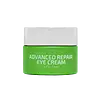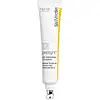What's inside
What's inside
 Key Ingredients
Key Ingredients

 Benefits
Benefits

 Concerns
Concerns

 Ingredients Side-by-side
Ingredients Side-by-side

Water
Skin ConditioningGlycerin
HumectantIsopropyl Palmitate
EmollientHelianthus Annuus Seed Oil
EmollientDimethicone
EmollientPropanediol
SolventGlycol Distearate
EmollientStearyl Alcohol
EmollientCetyl Alcohol
EmollientN-Hydroxysuccinimide
Skin ConditioningDipeptide-2
Skin ConditioningPalmitoyl Tetrapeptide-7
Skin ConditioningPalmitoyl Tripeptide-1
Skin ConditioningChrysin
Skin ConditioningTocopheryl Acetate
AntioxidantSimmondsia Chinensis Seed Oil
EmollientPrunus Amygdalus Dulcis Oil
Skin ConditioningCaffeine
Skin Conditioning1,2-Hexanediol
Skin ConditioningOleic Acid
EmollientStearic Acid
CleansingPotassium Cetyl Phosphate
EmulsifyingIsostearyl Isostearate
EmollientCetyl Stearate
EmollientAcrylates/C10-30 Alkyl Acrylate Crosspolymer
Emulsion StabilisingTerminalia Arjuna Extract
Skin ConditioningAllantoin
Skin ConditioningSteareth-20
CleansingHesperidin Methyl Chalcone
AntioxidantCaprylhydroxamic Acid
Fucus Vesiculosus Extract
EmollientTrisodium Ethylenediamine Disuccinate
Sodium Hydroxide
BufferingLecithin
EmollientHexylene Glycol
EmulsifyingPalmitoyl Tripeptide-5
Skin ConditioningCaprylyl Glycol
EmollientChlorhexidine Digluconate
AntimicrobialXanthan Gum
EmulsifyingPotassium Sorbate
PreservativeWater, Glycerin, Isopropyl Palmitate, Helianthus Annuus Seed Oil, Dimethicone, Propanediol, Glycol Distearate, Stearyl Alcohol, Cetyl Alcohol, N-Hydroxysuccinimide, Dipeptide-2, Palmitoyl Tetrapeptide-7, Palmitoyl Tripeptide-1, Chrysin, Tocopheryl Acetate, Simmondsia Chinensis Seed Oil, Prunus Amygdalus Dulcis Oil, Caffeine, 1,2-Hexanediol, Oleic Acid, Stearic Acid, Potassium Cetyl Phosphate, Isostearyl Isostearate, Cetyl Stearate, Acrylates/C10-30 Alkyl Acrylate Crosspolymer, Terminalia Arjuna Extract, Allantoin, Steareth-20, Hesperidin Methyl Chalcone, Caprylhydroxamic Acid, Fucus Vesiculosus Extract, Trisodium Ethylenediamine Disuccinate, Sodium Hydroxide, Lecithin, Hexylene Glycol, Palmitoyl Tripeptide-5, Caprylyl Glycol, Chlorhexidine Digluconate, Xanthan Gum, Potassium Sorbate
Water
Skin ConditioningPropanediol
SolventGlycerin
HumectantMyristyl Nicotinate
Skin ConditioningDimethicone
EmollientPullulan
Maris Aqua
HumectantC12-15 Alkyl Benzoate
AntimicrobialDextrin
AbsorbentPalmitoyl Tetrapeptide-7
Skin ConditioningNicotiana Benthamiana Octapeptide-30 Sh-Oligopeptide-2
Skin ConditioningDipeptide-2
Skin ConditioningCaffeine
Skin ConditioningTerminalia Ferdinandiana Fruit Extract
AntioxidantHydrolyzed Rhodophyceae Extract
Nannochloropsis Oculata Extract
HumectantPerilla Ocymoides Leaf Extract
Tonic1,2-Hexanediol
Skin ConditioningPhospholipids
Skin ConditioningSodium Acrylates Copolymer
Bacillus Ferment
Skin ConditioningSilica
AbrasivePolymethyl Methacrylate
Polyglyceryl-10 Stearate
Skin ConditioningHydrogenated Polydecene
EmollientSteareth-20
CleansingAdenosine
Skin ConditioningAloe Barbadensis Leaf Juice
Skin ConditioningHelianthus Annuus Seed Oil
EmollientTetrasodium Glutamate Diacetate
Hesperidin Methyl Chalcone
AntioxidantButylene Glycol
HumectantCaprylhydroxamic Acid
Chlorhexidine Digluconate
AntimicrobialGlyceryl Caprylate
EmollientTocopherol
AntioxidantEthylhexylglycerin
Skin ConditioningXanthan Gum
EmulsifyingMica
Cosmetic ColorantCitric Acid
BufferingPhenoxyethanol
PreservativeSodium Citrate
BufferingBenzoic Acid
MaskingSodium Benzoate
MaskingPotassium Sorbate
PreservativeSodium Hydroxide
BufferingCI 77891
Cosmetic ColorantWater, Propanediol, Glycerin, Myristyl Nicotinate, Dimethicone, Pullulan, Maris Aqua, C12-15 Alkyl Benzoate, Dextrin, Palmitoyl Tetrapeptide-7, Nicotiana Benthamiana Octapeptide-30 Sh-Oligopeptide-2, Dipeptide-2, Caffeine, Terminalia Ferdinandiana Fruit Extract, Hydrolyzed Rhodophyceae Extract, Nannochloropsis Oculata Extract, Perilla Ocymoides Leaf Extract, 1,2-Hexanediol, Phospholipids, Sodium Acrylates Copolymer, Bacillus Ferment, Silica, Polymethyl Methacrylate, Polyglyceryl-10 Stearate, Hydrogenated Polydecene, Steareth-20, Adenosine, Aloe Barbadensis Leaf Juice, Helianthus Annuus Seed Oil, Tetrasodium Glutamate Diacetate, Hesperidin Methyl Chalcone, Butylene Glycol, Caprylhydroxamic Acid, Chlorhexidine Digluconate, Glyceryl Caprylate, Tocopherol, Ethylhexylglycerin, Xanthan Gum, Mica, Citric Acid, Phenoxyethanol, Sodium Citrate, Benzoic Acid, Sodium Benzoate, Potassium Sorbate, Sodium Hydroxide, CI 77891
 Reviews
Reviews

Ingredients Explained
These ingredients are found in both products.
Ingredients higher up in an ingredient list are typically present in a larger amount.
1,2-Hexanediol is a synthetic liquid and another multi-functional powerhouse.
It is a:
- Humectant, drawing moisture into the skin
- Emollient, helping to soften skin
- Solvent, dispersing and stabilizing formulas
- Preservative booster, enhancing the antimicrobial activity of other preservatives
Caffeine is most associated with coffee, tea, and cacao. In skincare, it helps with calming inflammation and is rich in antioxidants.
While caffeine is used to treat cellulite and and dark circles, further studies are needed to prove this. It has been believed to help with these skin conditions due to its ability to dilate blood vessels and increase blood flow.
Some studies are looking into caffeine's ability to protect against UV rays.
Learn more about CaffeineCaprylhydroxamic Acid is a chelating agent.
Chelating agents help prevent metal ions from binding to other ingredients. This helps prevent unwanted reactions and effects from using the product.
Caprylhydroxamic Acid is often used with natural antimicrobial products as an alternative to preservatives.
Learn more about Caprylhydroxamic AcidChlorhexidine Digluconate is a preservative.
Dimethicone is a type of synthetic silicone created from natural materials such as quartz.
What it does:
Dimethicone comes in different viscosities:
Depending on the viscosity, dimethicone has different properties.
Ingredients lists don't always show which type is used, so we recommend reaching out to the brand if you have questions about the viscosity.
This ingredient is unlikely to cause irritation because it does not get absorbed into skin. However, people with silicone allergies should be careful about using this ingredient.
Note: Dimethicone may contribute to pilling. This is because it is not oil or water soluble, so pilling may occur when layered with products. When mixed with heavy oils in a formula, the outcome is also quite greasy.
Learn more about DimethiconeDipeptide-2 is a peptide. It can help to reduce the effects of aging.
Glycerin is already naturally found in your skin. It helps moisturize and protect your skin.
A study from 2016 found glycerin to be more effective as a humectant than AHAs and hyaluronic acid.
As a humectant, it helps the skin stay hydrated by pulling moisture to your skin. The low molecular weight of glycerin allows it to pull moisture into the deeper layers of your skin.
Hydrated skin improves your skin barrier; Your skin barrier helps protect against irritants and bacteria.
Glycerin has also been found to have antimicrobial and antiviral properties. Due to these properties, glycerin is often used in wound and burn treatments.
In cosmetics, glycerin is usually derived from plants such as soybean or palm. However, it can also be sourced from animals, such as tallow or animal fat.
This ingredient is organic, colorless, odorless, and non-toxic.
Glycerin is the name for this ingredient in American English. British English uses Glycerol/Glycerine.
Learn more about GlycerinHelianthus Annuus Seed Oil is the oil derived from the seeds of a Sunflower. Sunflower seed oil is non-fragrant. It is an emollient, meaning it helps to soften the skin.
Sunflower seed oil contains many fatty acids. The fatty acids found in sunflower seeds include (from highest amount to least): linoleic acid, myristic acid, palmitic acid, stearic acid, arachidic acid, oleic acid, and linolenic acid.
These fatty acids help the skin create ceramides. Ceramides play a role in repairing the skin barrier.
Helianthus Annuus Seed Oil helps moisturize the skin. This in turn helps the skin look more rejuvenated and smoother.
Sunflowers are rich in vitamin E.
Historians believe Indigenous cultures of North America domesticated sunflowers before corn. Thus they relied on sunflower oil for a variety of uses. One such use is moisturizing skin and hair.
Sunflower seed oil may not be fungal acne safe. We recommend speaking with a professional if you have any concerns.
Learn more about Helianthus Annuus Seed OilHesperidin Methyl Chalcone is an antioxidant and is a type of silicone.
Palmitoyl Tetrapeptide-7 (formerly Palmitoyl Tetrapeptide-3) is a lab-made peptide with anti-inflammatory and skin-repairing benefits. It's made up of four amino acids (glycine, glutamine, proline, and arginine) and palmitic acid (which helps it penetrate skin more effectively).
This ingredient helps reduce inflammation by limiting the production of interleukin-6 (IL-6), a chemical that triggers inflammatory responses, particularly after UV exposure.
Less inflammation = slower collagen breakdown and a longer-lasting, youthful appearance.
Palmitoyl Tetrapeptide-7 also stimulates collagen production and supports a healthier skin barrier.
Over time, this can improve skin firmness, hydration, and reduce the appearance of fine lines. It’s commonly paired with Palmitoyl Tripeptide-1 in the well-known Matrixyl 3000 complex for enhanced anti-aging effects.
This ingredient has been shown to be effective and safe in cosmetic use and you'll typically find it in small amounts (less than 0.01%).
Due to its palmitic acid base, it may not be safe for Malassezia folliculitis.
Read more about other common types of peptides here:
Learn more about Palmitoyl Tetrapeptide-7Potassium Sorbate is a preservative used to prevent yeast and mold in products. It is commonly found in both cosmetic and food products.
This ingredient comes from potassium salt derived from sorbic acid. Sorbic acid is a natural antibiotic and effective against fungus.
Both potassium sorbate and sorbic acid can be found in baked goods, cheeses, dried meats, dried fruit, ice cream, pickles, wine, yogurt, and more.
You'll often find this ingredient used with other preservatives.
Learn more about Potassium SorbatePropanediol is an all-star ingredient. It softens, hydrates, and smooths the skin.
It’s often used to:
Propanediol is not likely to cause sensitivity and considered safe to use. It is derived from corn or petroleum with a clear color and no scent.
Learn more about PropanediolSodium Hydroxide is also known as lye or caustic soda. It is used to adjust the pH of products; many ingredients require a specific pH to be effective.
In small amounts, sodium hydroxide is considered safe to use. However, large amounts may cause chemical burns due to its high alkaline.
Your skin has a natural pH and acid mantle. This acid mantle helps prevent harmful bacteria from breaking through. The acid mantle also helps keep your skin hydrated.
"Alkaline" refers to a high pH level. A low pH level would be considered acidic.
Learn more about Sodium HydroxideSteareth-20 is a waxy compound used to emulsify ingredients. It is created from stearyl alcohol.
It possesses surfactant properties. This means it reduces surface tension and helps oils, dirt, and pollutants to be washed away.
The 20 stands for the number of ethylene oxide used to create this ingredient.
Learn more about Steareth-20Water. It's the most common cosmetic ingredient of all. You'll usually see it at the top of ingredient lists, meaning that it makes up the largest part of the product.
So why is it so popular? Water most often acts as a solvent - this means that it helps dissolve other ingredients into the formulation.
You'll also recognize water as that liquid we all need to stay alive. If you see this, drink a glass of water. Stay hydrated!
Learn more about WaterXanthan gum is used as a stabilizer and thickener within cosmetic products. It helps give products a sticky, thick feeling - preventing them from being too runny.
On the technical side of things, xanthan gum is a polysaccharide - a combination consisting of multiple sugar molecules bonded together.
Xanthan gum is a pretty common and great ingredient. It is a natural, non-toxic, non-irritating ingredient that is also commonly used in food products.
Learn more about Xanthan Gum